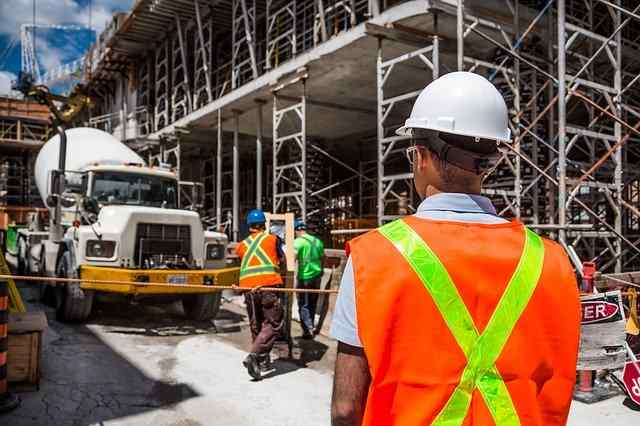How to Turn the Construction Industry Into the Online World
Back in the day — when manual procedures and offline transactions heavily dominated construction — corporations struggled to streamline project management and collaboration.
Since then, technological breakthroughs have dramatically reshaped how the industry operates.
Moving into 2025, it’s projected that most construction-related tasks will be handled digitally.
But the question stands: How do we fully integrate the construction industry into an online platform that maximizes efficiency while ensuring safety and quality control?
We examined several ways.
This article will delve into some of those boundary-pushing methods and strategies designed to usher the brick-and-mortar business into the digital age gradually.
Invest in E-commerce for construction companies
From bricks to lumber; heavy machinery to minor fixtures– the shift to e-commerce has revolutionized how construction materials and services are bought and sold.
Building an e-commerce platform dedicated to providing construction materials, tools, and services reduces time-consuming procurement channels and inventory management hassles.
E-commerce for construction companies also ensures a transparent transaction process. Price comparison, too, becomes a breeze.
Real-time stock availability, suppliers’ credentials, and automated purchase orders can be easily monitored in a user-friendly interface.
Pro tip: Ensure your online eCommerce platform comes equipped with all the essential B2B functionalities from the get-go, whilst maintaining the flexibility of cloud-based software, aiming at seamless integration with your ERP and other tech stack.
Leverage Project Management Software
As the quote goes “Time is money“; perhaps this holds nowhere truer than in the construction sector.
Necessary checkpoints and milestones have a deadline, and falling behind can result in delays and penalties. These can often be too costly.
Professional project management software provides a central platform where:
- Workflow tracking
- Deadlines
- Resources, and
- Budgeting; all can be properly monitored and controlled.
The software significantly decreases miscommunication whilst enhancing efficiency — making sure that everyone is in sync and moving towards the given goal post. Takeoff services for construction can greatly assist in the budgeting stages. Services like this use digital takeoff software to calculate quantities and convert them into real labor and material pricing.
Select software that offers integrations with other critical tools in your portfolio (e.g., CRM systems, accounting software). Doing so will break silos between teams and streamline workflows, leading to improved productivity and reduced project execution time.
Related reading: The Top Seven Benefits of Using Project Management Software
Implement Virtual and Augmented Reality
The days when contractors used cumbersome blueprints or drawings to visualize structures and pieces are gradually fading, thanks to the advent of virtual reality (VR) and augmented reality (AR) technology.
VR offers 3D visualization of projects before a single tool has hit the ground. It enhances client interaction by adding a whole new immersive experience and a layer of realism.
AR, in contrast, overlays computer-generated video onto camera-captured video in real-time, allowing architects and developers to collaborate remotely like never before.
Such digitization not only improves project visualization but also allows for real-time modifications if changes are needed.
Encourage the Use of Building Information Modeling
Building Information Modeling (BIM) maps out a digital representation of the physical and functional aspects of a project, providing extensive details about each phase of construction.
This technology not only increases coordination among team members but also offers solutions to potential glitches before they even occur. Entries into the BIM platform can be viewed and updated by all involved parties in real-time, thereby fostering a more collaborative environment and drastically reducing downtime and inefficiencies.
For example: Using BIM, engineers, and architects can identify and resolve potential structural conflicts they might encounter down the line.
This can save corporations from the costly errors that can occur during the later stages of a project.
Enhance Security with Blockchain Technology
One of the main concerns when transferring the construction sector to a digital framework is security. Fraud, theft, and tampering of historical records were leading problems in traditional business models.
Not anymore.
Blockchain technology — a kind of complex algorithm, or ledger, that enables records of transactions to be secure yet public ledges— has been highly successful in ensuring online privacy and empowering Audit trails.
- Integration of blockchain technology in a construction industry setting not merely offers secure online transactions but also ensures the immutability of contributed intellectual resources and decisions throughout the project’s lifespan.
- Teams can make real-time decisions with confidence, knowing that their inputs and data integrity are protected.
- Moreover, construction firms that apply blockchain technology can demonstrate higher levels of trustworthiness and authenticity to their clients.
Related reading: 10 Tips For You To Protect Your Construction Company from Cyber Threats
Utilize Construction Drones for Site Surveys
The application of drone technology replaces the lengthy manual process of site surveys by offering rapid, accurate, and real-time images and data.
Drones give architects a clear aerial view of the construction site— making it possible to track the project’s progress at all stages.
Potentially unsafe conditions can also be spotted easily without endangering human life.
Hence, laborious tasks are eased, and human error is minimized through using this technology.
The implementation of drone technology has also drastically decreased the time it takes to gather extensive site data.
For example, in this Forbes article — Every rooftop solar installation requires a roof survey and Nvidia’s 3D Omniverse digital twin platform did exactly that with drone imagery. This reduced the time for roof surveys dramatically and improved overall productivity.
Integrate on Site Wearable Technology
Digitization in the construction industry is multi-faceted. And one key aspect of this is implementing wearable technology on the construction site.
Devices such as smart hard hats, glasses, and wristbands can provide various advantages. Like:
- Enhanced safety: Wearables fitted with sensors can monitor the environmental parameters and the wearer’s vital signs, alerting the management team about potential hazards.
- Navigation: Devices like smart glasses can display helpful navigational cues and provide field workers with accurate and real-time instructions related to their tasks.
- Real-time monitoring & productivity analysis: Vital data collected via these devices can help identify fatigue and stress among workers, facilitate more resourceful worker scheduling, and lead to increased productivity.
- On-Site communication: Communication devices make intra-team communications seamless, fostering a harmonic work environment.
- Data Assimilation: Such pragmatic devices can screen the spatial positions of the construction plant, tools, and workforce, allocate them, and offer operational feedback to aid with process management improvement.
- Emergency response: In the event of unexpected situations, these devices can provide swift communication to the equipment or worker for an immediate course of action.
Integrated usage of these wearable devices adds a significant layer to the digital construction strategy — taking digitization to the human interface, reducing accidental mishaps, saving lives on site, and ultimately propelling the overall efficiency of a construction project.
Embrace the Power of Robotic Equipment
Remember the movie “RoboCop”?
The sci-fi journey of mechanical officers helping with law enforcement is not too distant from reality now.
We may not have humanoid robots in common use yet, however, in the construction industry, the idea is being transformed into applicable reality by using remote-controlled robotic machinery.
These machinery, ranging from remotely-controlled cranes and excavators to bricklaying bots, can work in potentially unsafe and precarious conditions, performing highly task-efficient operations without the risk of worker injury or fatigue.
Consider this: Among all of the trends sprouting in today’s construction scene, the application of robots has the potential to dramatically decrease labor demands while maintaining work efficiency.
A lower risk of human injury leads to fewer compensations that need to be paid out, adding long-term financial benefits to firms.
Per stats, ‘the Construction Robots Market size is expected to grow from USD 331.70 million in 2023 to USD 681.80 million by 2028, at a CAGR of 15.50% during the forecast period (2023-2028).’
Related reading: How To Make A Business Plan For A Construction Company
Advantages offered by these robotic apparatus include:
- Error Minimization: Precision cutting-edge tech features to navigate complex designs and intricate structures, drastically reducing the margin for error.
- Boost Productivity: Around-the-clock productivity—from bricklaying to steel tying, robots work non-stop to ensure timelines are met.
- Security: Camera-equipped knights ensure a secure work area by detecting irregularities and potential threats around the clock.
- Sustainability: Robots ensure reduced waste and more sustainable solutions as there is less material wastage in labor, reduced redundancy, and consummate resource allocation.
- Uninjured and Safe workers: Robots ensure high-risk task operation without posing a perilous threat to human life.
- Adherence to Ethical Labour Framework: With a lesser need for human manpower particularly in harsh and unsafe environments, firms ensure the ethical treatment of workers, decreasing violations of essential human labor laws.





